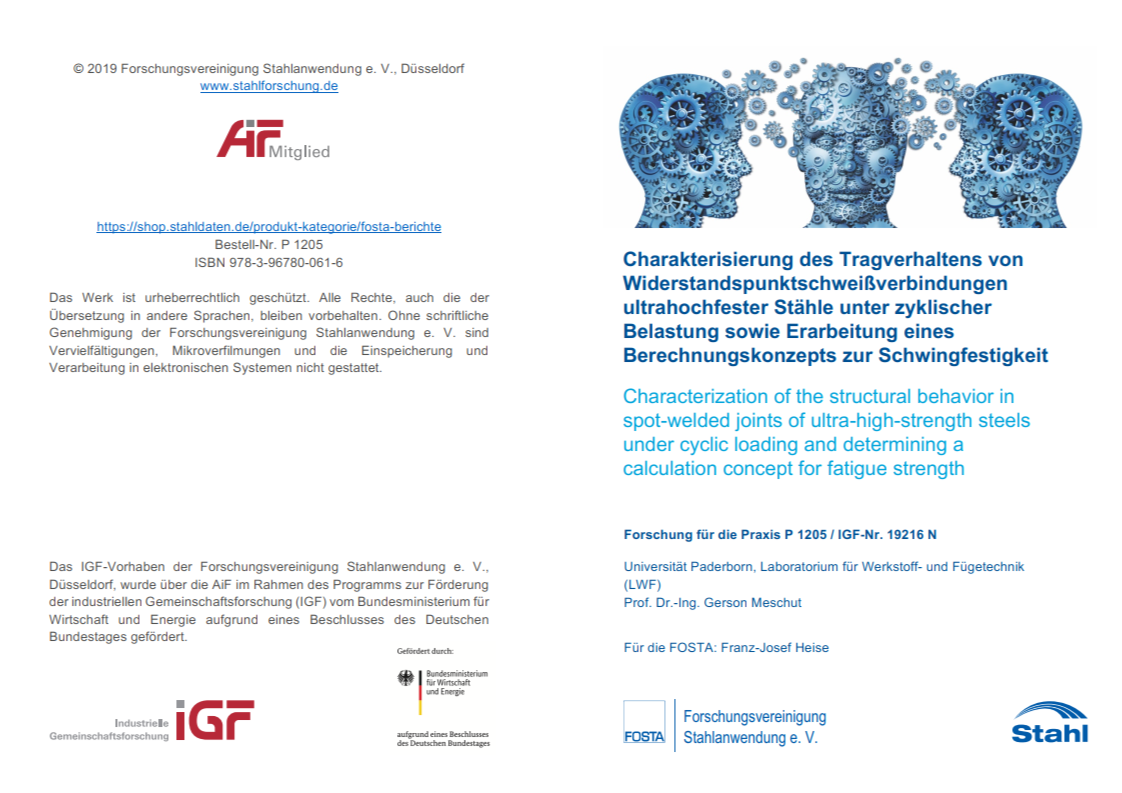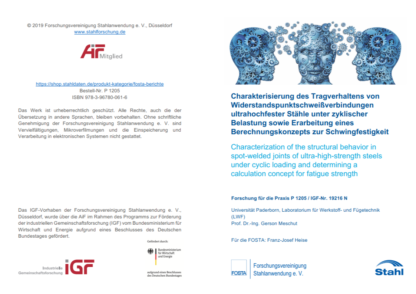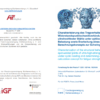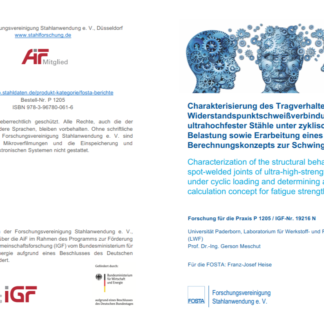Description
P 1205 – Characterization of the structural behavior in spot-welded joints of ultra-high-strength steels under cyclic loading and determining a calculation concept for fatigue strength
Despite challenges in dealing with resistance spot welding processes, steel grades such as high-strength dual or complex-phase steels are increasingly being used. The advantage of these steels is in the excellent strength combined with good forming properties. During resistance spot welding of these high-strength steels, the so-called softening zones are formed by tempering effects, which can be determined by hardness measurement. This leads to endangering the component integrity. Up to now, there is no generally accepted method, which can predict the fatigue life of a spot-welded and highstrength steel component using analytical analysis. Due to time and cost consuming experimental investigations, the aim of this research project is to develop a calculation concept. The fatigue strength should be described by characteristic parameters (e.g. Load-bearing behaviour) to predict the fatigue life of spot welded joints. This enables the estimation of the service life in advance. In order to enable an efficient analysis of spot-welded connections, existing guidelines such as the “Rechnerische Festigkeitsnachweis für Maschinenbauteile”, in short the FKM guideline, are used. In the first step, the fatigue strength values and a corresponding database for different applications as well as for safe and cost-efficient design will be determined. For this reason, the fatigue life of spot welds can be predicted under cyclic loading with sufficient accuracy. To cover a wide range of applications and due to comparability and supplementation of the previous findings, the investigations are carried out with the aid of the LWF-KS-2 test concept at the load angles 0° (shear load) and 90° (Tension load) under cyclic load. In addition, it is intended to establish a functional calculation concept between the welding process parameters, the quasi-static joint strengths, and the fatigue strength of the investigated ultrahigh-strength steels. These weld spot properties, such as the weld spot diameter or the influence of the softening zone due to the variation of the weld spot diameter, are to be included in the calculation concept. The further aim is to analyse the crack initiation location and the crack propagation. The failure behaviour from crack initiation to final failure should be determined with the propagation method, the shutdown based on characteristic changes of stiffness or frequency. These results can be used as the basics for the further investigations according to the FKM guideline. To verify the calculation concept at a new material combination made of high-strength dual-phase steel should be examined with the aid of the estimation of the fatigue strength values. Finally, the determined fatigue strength values will be provided to the users, particularly in the areas of design and dimensioning of spot welds. All in all, the results of the research project enable the efficient and economic development of spot-welded components made of the highest strength dual and complex-phase steels. The investigations in this research project contribute to the qualification of these steels for new spot-welded lightweight components.
Published in:
2019
Authors:
Prof. Dr.-Ing. G. Meschut




